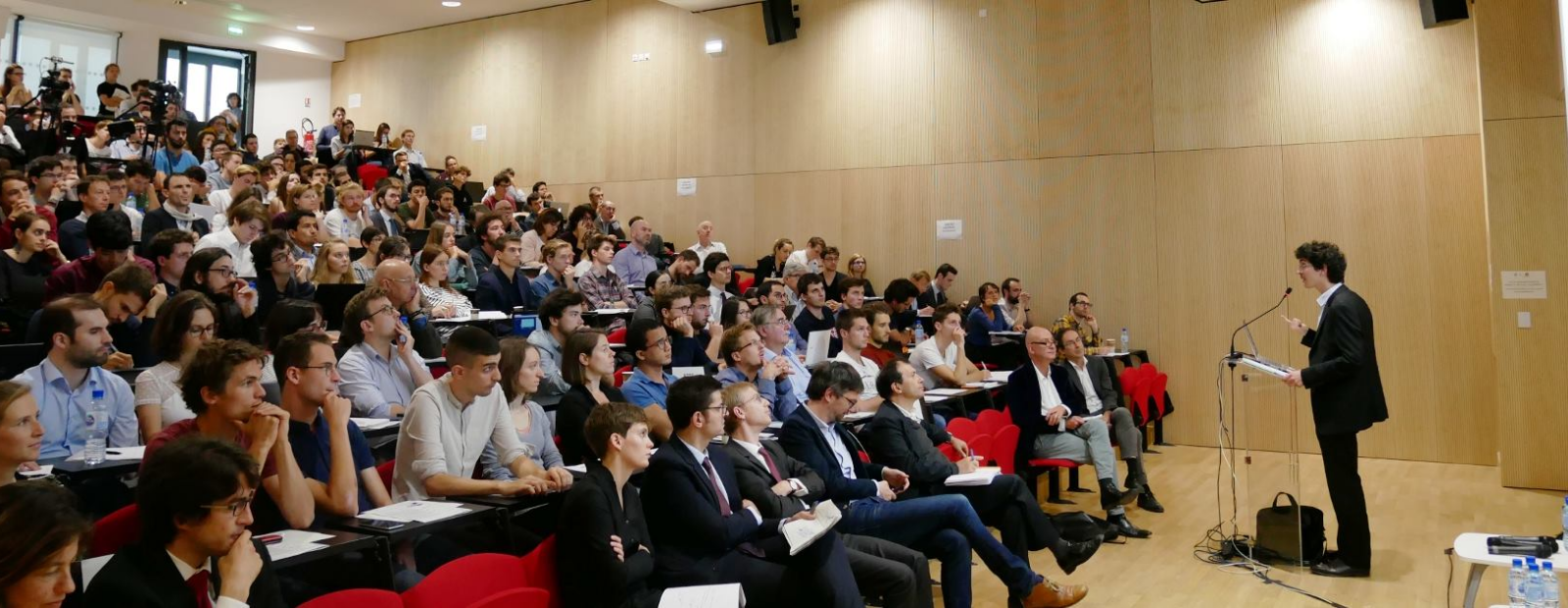- Professeur
- Université Paris 1 Panthéon-Sorbonne
Research themes
- Demography and Household Economics
- Growth
- Individual Behaviour
Contact
Address :48 Boulevard Jourdan,
75014 Paris, France
Campus:
Campus Jourdan
Floor: 4
Office: 67
Tabs
TITRES UNIVERSITAIRES
- Ingenieur diplomé de l’Ecole Polytechnique (1989).
- DEA Macroéconomie et Conjoncture, Université de Paris I, mention bien (1990).
- Doctorat en Science Economique, obtenu avec la mention très honorable avec félicitations. Thèse dirigée par le Professeur A. d’Autume, et soutenue à l’Université de Paris I le 26 janvier 1994. Sujet: Capital humain, innovation et hétérogénéité dans une économie en croissance.
- Habilitation à diriger des Recherches, Université de Marne-la-Vallée, soutenue le 16 mai 1995.
- Agrégation de Sciences Economiques obtenue en 1996.
CURSUS
- 1986-1989: Elève de l’Ecole Polytechnique.
- 1989-1993: Allocataire de recherche de l’Ecole Polytechnique.
- 1989-1990: DEA Macroéconomie et Conjoncture, Université de Paris I.
- 1990-1993: Préparation d’une thèse au laboratoire MAD (Macroéconomie et Analyse des Déséquilibres) de l’Université de Paris I.
- 1993-1994: Boursier au CEPREMAP.
- 1994-1996: Maître de conférences à l’Université de Marne-la-Vallée. Membre du laboratoire MAD de l’Université de Paris I, et du laboratoire OEP (Organisation et Efficacité de la Production) de l’Université de Marne-la-Vallée.
- 1996-1999: Professeur à l’Université de Franche-Comté. Membre du CRESE (Centre de Recherche sur les Stratégies Economiques) de l’Université de Franche-Comté (1996-1998), puis du LIBRE (Laboratoire Interdisciplinaire Bisontin de Recherches Economiques) entre 1998 et 1999. Membre associÈ au MAD, puis à EUREQua à l’Université de Paris I.
- 1999: Professeur à l’Université de Paris I. Membre d’EUREQua (Equipe Universitaire de Recherche en Economie Quantitative).
Publications HAL
-
-
Forthcoming : Prudent aggregation of quasi-hyperbolic experts Journal articleJournal: Economic Theory
Published in
-
-
On Markovian collective choice with heterogeneous quasi-hyperbolic discounting Journal articleJournal: Economic Theory
Published in
-
Technological changes and population growth: The role of land in England Journal articleJournal: Economic Modelling
Published in
-
On a Simple Equilibrium with Heterogeneous Quasi-Hyperbolic Discounting Agents Journal articleJournal: Revue d'économie politique
Published in
-
On a Simple Equilibrium with Heterogeneous Quasi-Hyperbolic Discounting Agents Pre-print, Working paper
Published in
-
Technological changes and population growth: the role of land in England Pre-print, Working paper
Published in
-
On Time-Consistent Collective Choice with Heterogeneous Quasi- Hyperbolic Discounting Pre-print, Working paper
Published in
-
Endogenous information revelation in a competitive credit market and credit crunch Journal articleJournal: Journal of Mathematical Economics
Published in

